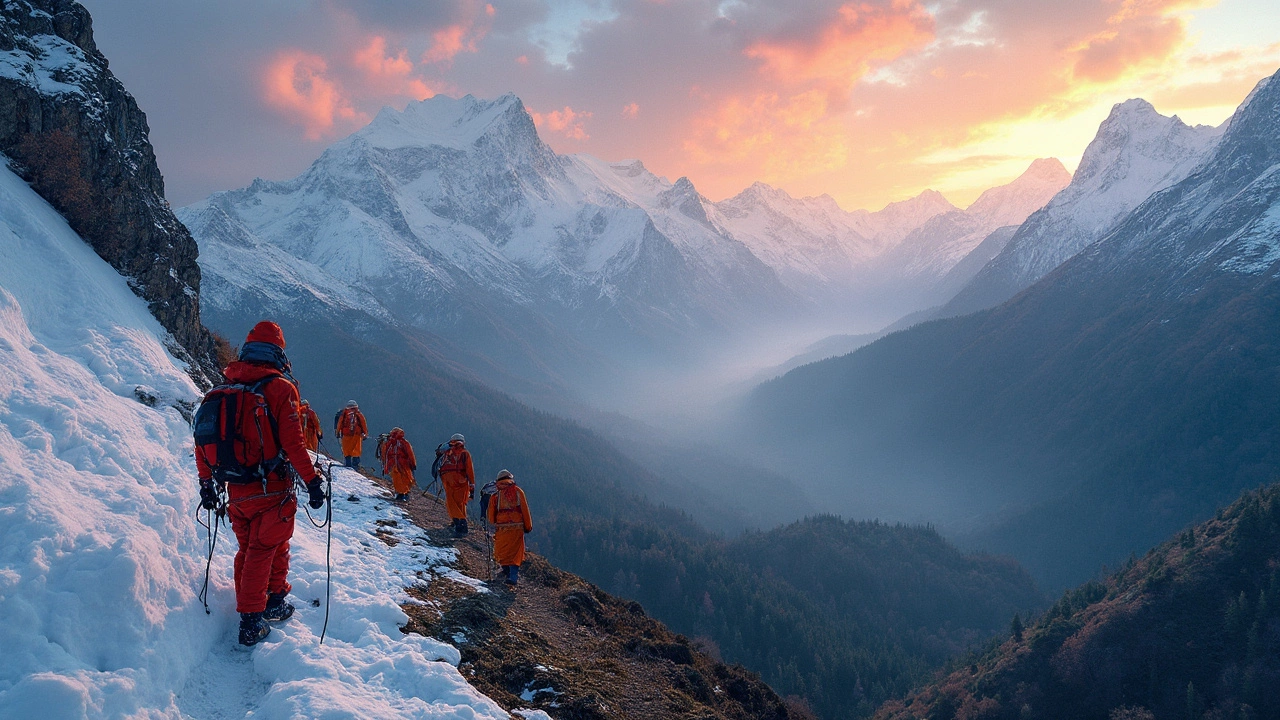Trekking in India: Best Trails, Safety Tips, and Guide Essentials
When you think of trekking, a physical journey on foot through remote, often mountainous terrain. Also known as hiking, it's not just walking—it's navigating forests, crossing rivers, and sleeping under stars in places cars can't reach. In India, trekking isn’t a hobby—it’s a rite of passage for anyone who wants to see the country beyond temples and cities. From the icy passes of the Himalayas to the misty hills of the Western Ghats, every trail tells a story. And if you’re planning to go, you need more than good shoes—you need to know what you’re getting into.
Most serious treks in India, like Roopkund, a high-altitude trail in Uttarakhand known for its ancient skeletons and glacial lake, or Kedarkantha, a beginner-friendly winter trek with snow-covered ridges and panoramic views, require local guides. Not because you can’t find the path, but because permits, weather shifts, and altitude sickness don’t wait for tourists. A guide knows where the stream has flooded, which village offers warm tea after a long climb, and when to turn back before the clouds roll in. Himalayan trekking, a category of high-altitude walking adventures across India’s northern mountain ranges is especially risky without local knowledge. The Great Himalayan Trail, stretching over 4,500 km, isn’t just long—it’s layered with cultural stops, unpredictable weather, and trails that vanish in snow. You don’t just hike it—you survive it with the right help.
Trekking safety in India isn’t about avoiding danger—it’s about preparing for it. You need to know how to spot early signs of altitude sickness, carry the right layers for sudden cold snaps, and avoid drinking water from streams that look clean but aren’t. Many travelers get sick not because they’re weak, but because they skip basics like water purification or acclimatization days. And while some trails are marked, many aren’t. A GPS won’t save you if you’re lost in a foggy ridge near Markha Valley, a remote trek in Ladakh with Buddhist monasteries and high passes. That’s why the best treks aren’t the ones with the most likes on Instagram—they’re the ones where you’ve read the guide, packed the right gear, and booked a local expert.
What you’ll find in these posts isn’t just a list of trails. It’s the real talk: what works, what doesn’t, and what no one tells you until you’re halfway up a mountain. Whether you’re a first-timer wondering if you need a guide, or a seasoned hiker looking for the next challenge, the stories here cut through the noise. No fluff. No marketing. Just what you need to know before you lace up your boots.
